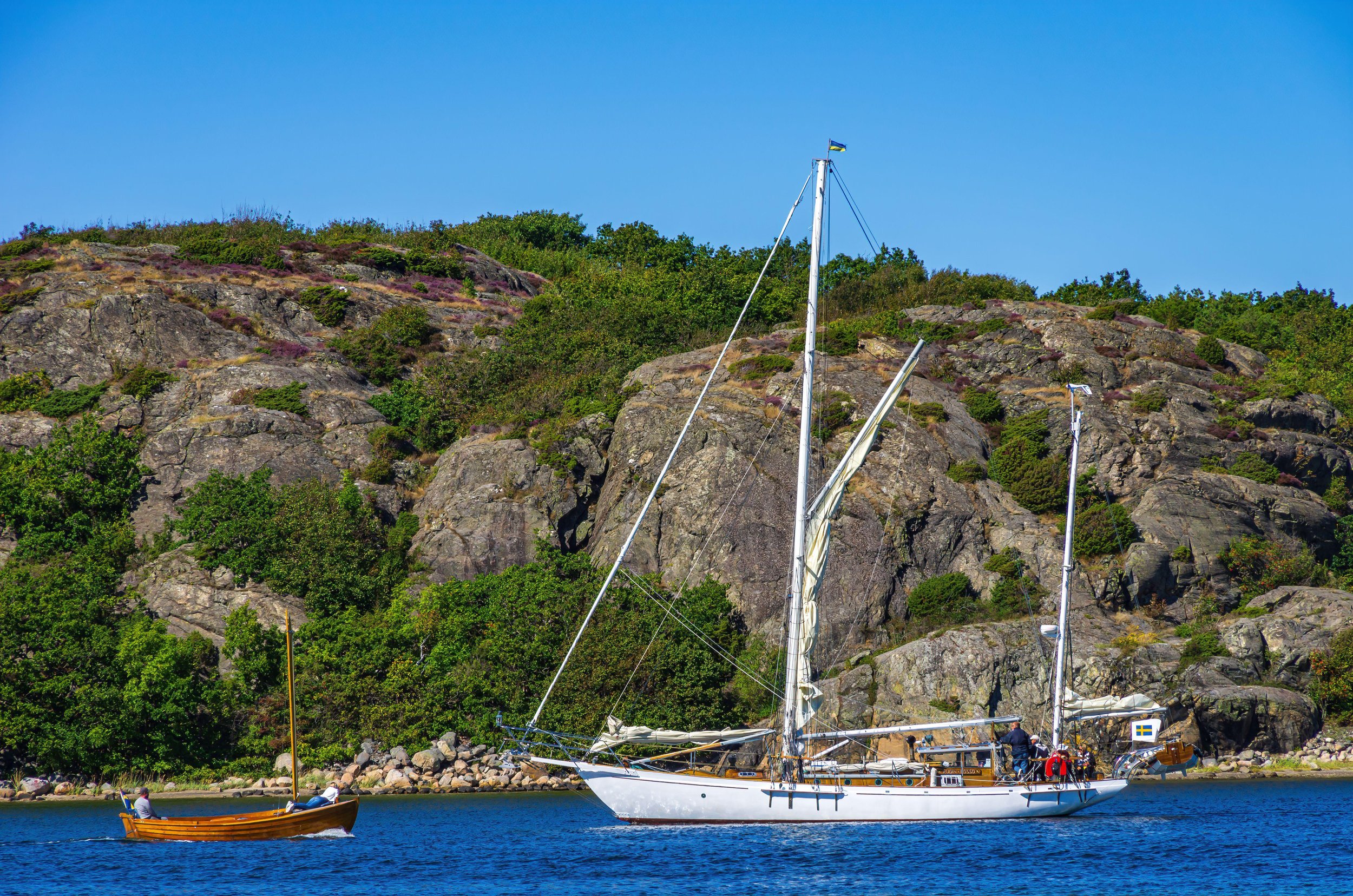
Knut Ulriksson | Koster Islands, Sweden | Licenced by Alamy Stock Photo
More Stuff …
-
The Term "Koster Boat" stems from the type of fishing boats build on the Koster Islands west of Strömstad on the Swedish west coast.
The original fishing boats ("Allmoge båtar") were about 10-12 meters in length, and were relatively broad and round, but had at the same time a deep and sharp underwater body, which made them very seaworthy and well sailing. They were clinker built with Gaff rig and a bowsprit.
Later it was "copied" to be a Racing & Recreational boat and was fitted with Bermuda Rig and then called "Modern Koster".
The popularity of the Modern Kosters rose drastically and in 1930 the "Swedish Kosterbåt Förbund (SKBF) was founded. In 1934 they launched an uniform rules for Koster Sailboats, giving following classes: K20 , K22 , K25, K32 , K38 , and K45 . K stands for "kosterbåt" and the numbers indicate the minimum of square meters of sail the boat need to have. Up to 20% larger sail area is allowed, so for instant a K32 can have between 32 and 38,4 m2 sail area. This means, that the measurements of a boat still plays a role. To which extend, is not known to this site, but the actual class will be determined by SKBF when a Koster Boat is measured. SKBF also made a unique Koster Class - K6 - the first boat of which was built in 1944. It has a LOA of 6.25 m, a Beam of 2.25 and a sail area of 18 m2.In 1966, SKBF announced a design competition under the "Koster Rule" for K25. This was won by Lars-Olof Norlin with a construction in fibreglass reinforced polyester - Allegro 27, thus confirming fibreglass to be a material to be reckoned with for future boat building.
The first comprehensive fibreglass production, however, started already in 1964 when the first Laurin 32 saw the day of light in Malmö Flyg Industry.
The majority of Laurin Kosters follows the Koster Rule, but differs from the original form, by smaller beam and with a "Whaledeck” (valdäck) , i.e. the transition between the side and the deck is rounded.
Examples of Koster Boats: Havs- and Storfidra - Laurin 28, 31 & 32 - Allegro 27, 30 & 33 - Vagabond 31
Koster Boats Constructors: Arvid Laurin - Georg Ström - Hjalmar Johansson - Johan H. Seldén - Knud H. Reimers - Lars-Olof Norlin
Famous Koster Boat Builders: The name most knowledgeable of all builders in Bohuslän in the mid -1800s was Thomas Kile from South Koster.The boat building trade were often handed down through families, so Tomas was followed by his nephew - Hans Henriksson - and his son - Karl Hansson - both from South Koster.
Another renowned boat builders from Koster was Anders Persson in Brevik.
More Builders on the Swedish West Coast were Carl Stjern from Galtö and Johan Harald Seldén from Buvenäs, Orust (1880 - 1916).
Later the building of Kosters moved to the Swedish East Coast, where "Rosättra Varvet" in Roslagen, North of Stockholm is renown for building a huge number of - especially Laurin - Kosters.
Source: https://web.archive.org/web/20200925122522/http:/laurinkoster.dk/index.HTM
-
In cooperation with Nisse Dunér of the SKBF, the "Koster Rule" is now translated into English as follows:
The koster boat is a double-ender, i.e the stern is sharp or rounded with an external hinged rudder
The stem must be straight or inclined a max. 60 degrees
The construction of wooden keel, stem, stern post, frames etc. has to be strong
The ballast keel shall be of Iron and run almost the full length of the wooden keel
The profile of the lines of the underwater body shall be straight or moderately convex (not concave)
The length of the mast must not be more than 3 times the length of the main boom
This site only allows few exceptions from the above rule i.e.
A) The L38, which does not comply with rule 5 and
B) Few boats with Lead Keel (Rule 4).
We allow these exceptions as these boats in other ways follow Arvin Laurin's "Koster interpretation" and therefore seem to be "natural members of the Laurin Koster Family".
This, however, must not be taken as an attempt to argue the validity of the Koster Rule.
Source: https://web.archive.org/web/20200925122522/http:/laurinkoster.dk/index.HTM